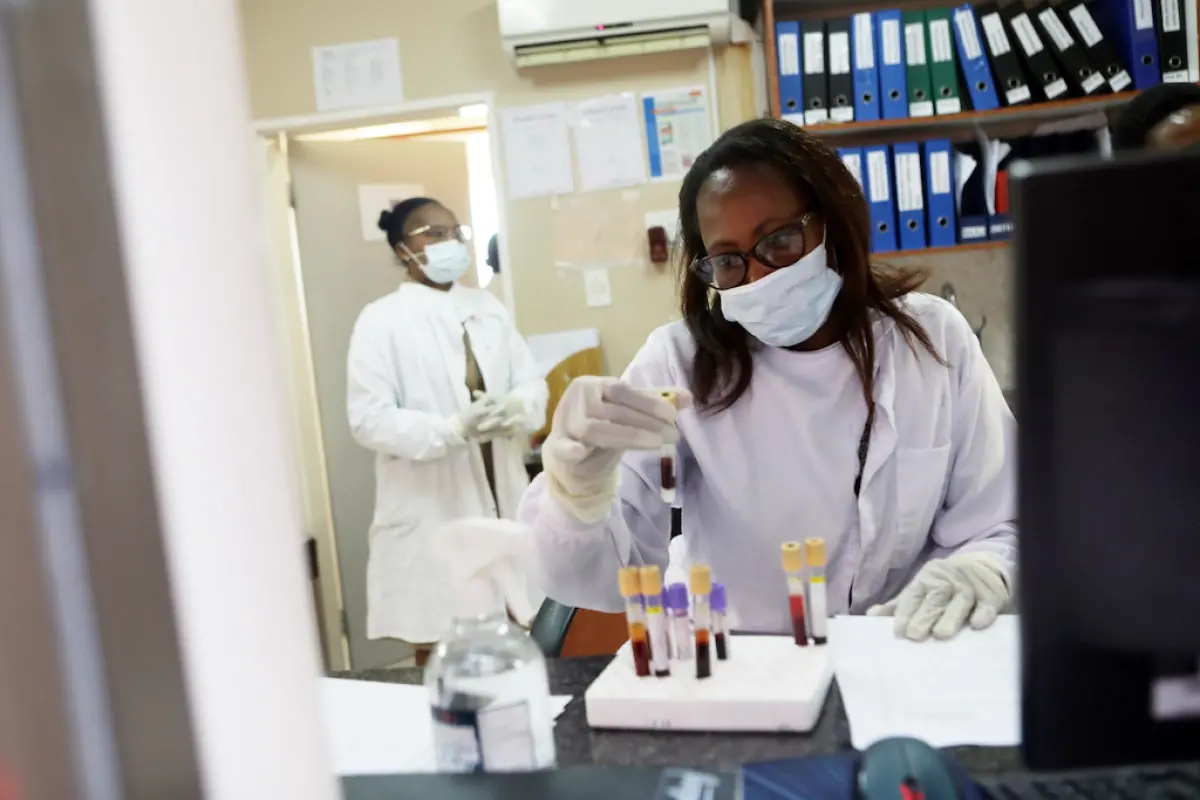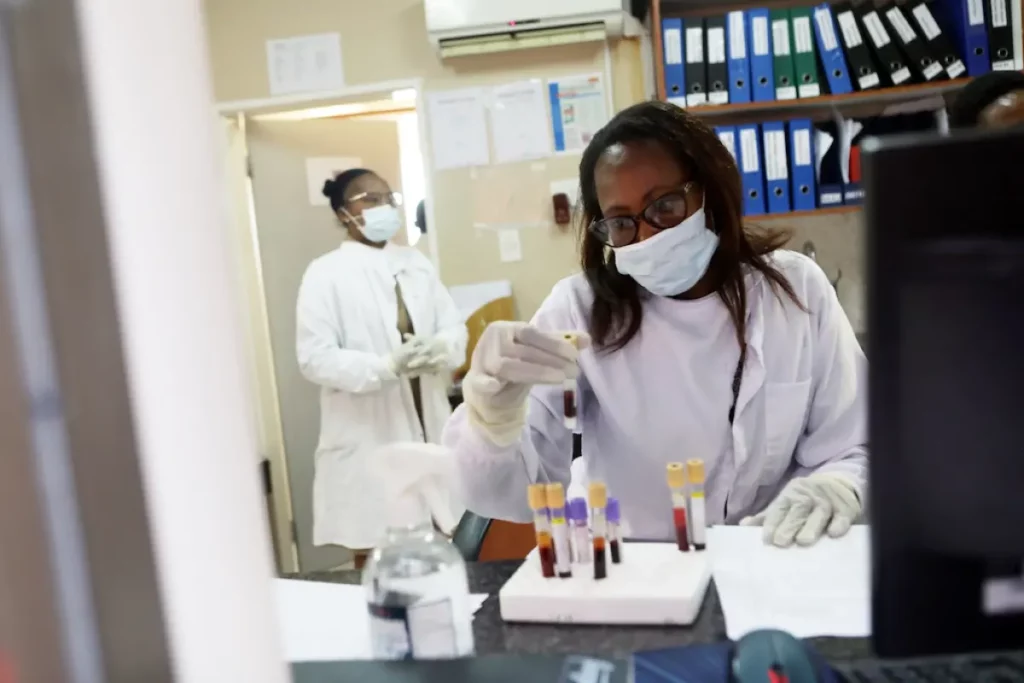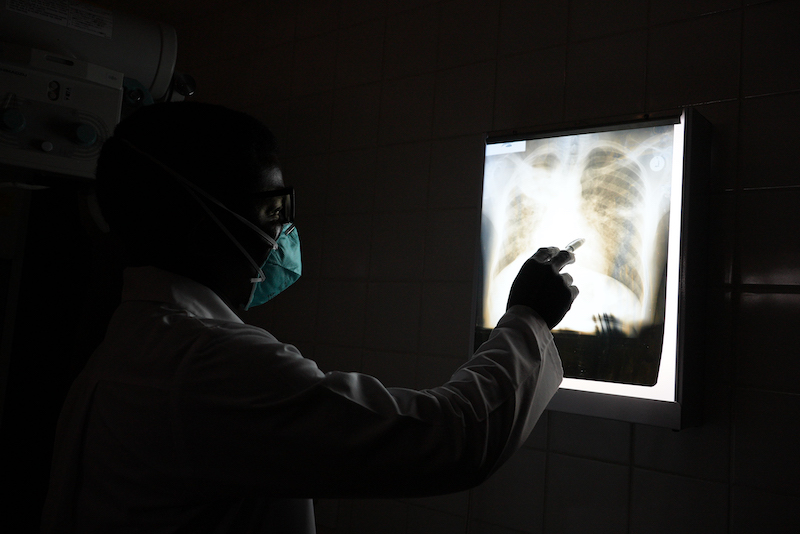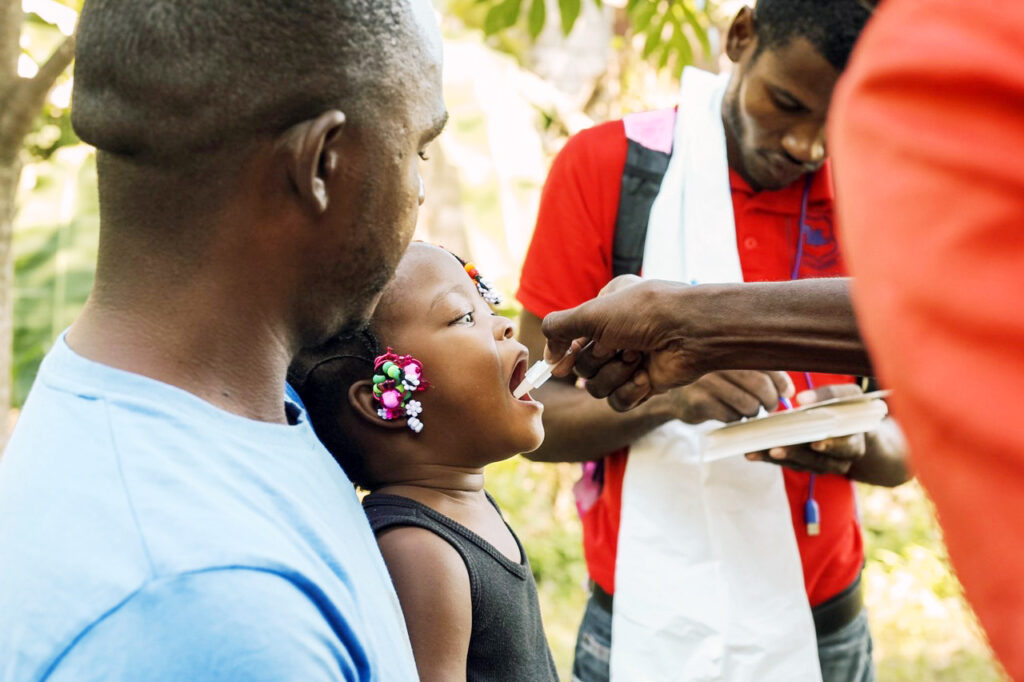Tracking Tuberculosis Through the Pandemic and Beyond

PIH infectious disease doctor looks at TB’s toll on global health, offers solutions
Posted on March 24, 2023

Globally, tuberculosis [TB] cases and deaths spiked during the COVID-19 pandemic as health systems and medical workers diverted their attention to cope with unprecedented demand for care and treatment for the rapidly spreading infectious disease. COVID-19 surpassed TB as the deadliest infectious disease, but as the pandemic has subsided, TB has regained first place. Indeed, in 2021, there were 1.6 million deaths from TB, according to last year’s WHO Global TB Report .
To better understand the implications for global health of TB’s rise during the pandemic and beyond, we reached out to PIH’s Senior Health and Policy Advisor Dr. KJ Seung, who, for more than two decades, has been working to curb the spread of infectious diseases around the world. In particular, Seung has been shepherding the fight against TB for Partners In Health since 2001, and currently co-leads the Expand New Drug markets for TB partnership, or endTB, which spans 17 countries. Here, Seung explains what drove TB’s resurgence, how PIH is fighting back, and what it all means for global health.
Why did TB cases and deaths rise during the pandemic?
The pandemic disrupted health systems all over the world. During COVID-19 surges, hospitals were overrun by severely ill patients. Many services had to be temporarily shut down in order to shift health workers to emergency rooms and makeshift COVID-19 wards. This had a major impact on TB clinics and diagnostic services, which need to be open and accessible to people who are starting to have symptoms of TB.
People were also scared to come to the hospitals and health centers because of COVID-19, leading to delayed diagnosis. When people are coughing at home—instead of being diagnosed and treated for TB— that means that they are infecting more people around them.
Just to be clear, the number of TB cases “found” actually decreased during the pandemic, but we know that the number of TB cases and deaths from TB increased, even if these are not recorded in official statistics.
Three years after the start of the pandemic, what’s happening with TB caseloads?
As the pandemic subsided and health systems returned to normal, the number of people diagnosed with TB has been rising, though in most countries they have not gotten back to 2019 levels. This is because a surge in TB lasts for many years, even after the disruption that triggered it has resolved. We know now that at the beginning of the pandemic, there were a lot of undiagnosed cases of TB. Many of these people died because they couldn’t get diagnosed and treated. And they infected many others in their family and community during that time. Those infected people might feel fine now but get sick years later. So, we will still feel the effect of the pandemic on TB diagnoses for years to come.
Where, globally, have caseloads surged the most?
Probably all regions have been affected, but regions that experienced more severe COVID-19 surges probably had more disruption to TB services and therefore larger TB spikes. So Latin American and Asian countries probably were affected more than African countries.

What is PIH doing at its sites to help?
PIH is working hard to improve TB diagnosis at all our sites. This is important because TB diagnosis was difficult even before the pandemic! One of the more exciting initiatives is to expand X-ray services. X-ray is a great way to look at the lungs, and it’s helpful for many other diseases besides TB. But historically, X-ray has only been available at the hospital level in most of the PIH countries. Hospitals have the X-ray machines, the electricity to power them, and the doctors to read them. But that means that patients who need X-ray must travel long distances to get one.
PIH is pushing X-ray out to health centers in rural Lesotho, Peru, Malawi, and Sierra Leone, which is very complicated because it often requires infrastructure upgrades to improve the power supply or internet access. There are exciting new advances in X-ray technology that involve [artificial intelligence] to automatically read chest X-rays, and that is making it more feasible to push X-ray out to more remote health centers. PIH sites are also using small mobile X-ray machines—for instance, staff carry them in backpacks to remote communities in Peru—to reach out to even more remote communities that can’t even come to the health center.
What would you say is something widely misunderstood about TB?
It’s really hard to get diagnosed with TB in most of the countries where PIH works. In the United States, you can go to any clinic and see a nurse or doctor who has access to X-ray and other ways to diagnose TB. In the countries were PIH works, those laboratory tests usually aren’t available to the clinicians in primary health centers.
So, diagnosis of TB takes multiple visits and often referral to a nearby hospital. People get diagnosed late when their TB is very advanced and much more difficult to treat. In the meantime, they transmit TB to many more people around them. So the cycle continues. That’s one of the reasons TB is the infectious disease that kills the most people every year.
Originally published on pih.org



